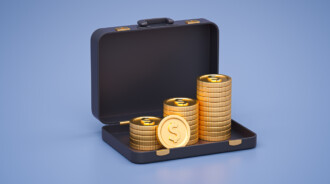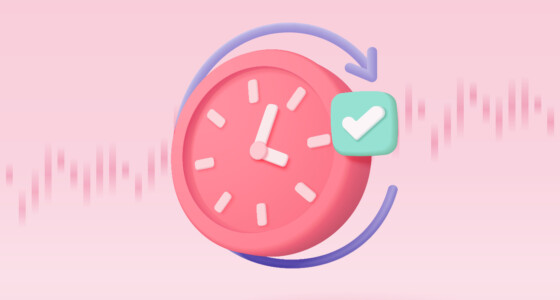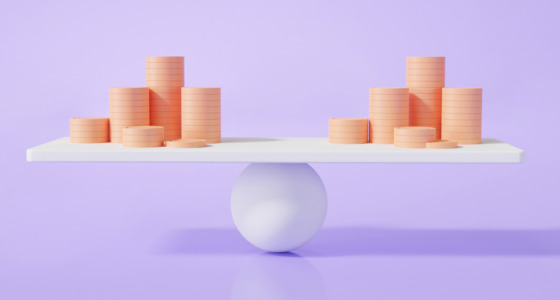

What is a bond yield? Why does it matter? And how can you profit from it? These are all the queries that this guide will answer for you. We’ll start with a basic definition of bond yield and discuss its importance in the realm of finance.
After that, we’ll look at how bond yields are calculated and explore factors that can affect them. By the end of this article, you’ll have a clear understanding of this subject and why they matter!
Let’s get started.
What Is Bond Yield?
Bond yield meaning is simple. It is the return on investment or profit that an investor realizes from holding a bond until it matures. The yield is expressed as a percentage of the bond’s purchase price.
For example, if you buy a bond for $1,000 at a 15% annual return and it matures in 10 years, you will be entitled to an interest of $150 annually. Upon maturity, you will also get your initial investment back, which in this case, is $1,000.
Understanding Bond Yield
The core concept of bond acquisition is precisely that of a debt where the bondholder provides a loan to the bond issuer against fixed interest payments until the bond’s maturity date. The size of these periodic payments depends on the coupon rate, and the total value of payments received by the bondholder over the life of the bond is referred to as its yield.
Most bonds make regular interest payments, typically semi-annually, and are referred to as coupon bonds. The interest payments are linked with the bond’s face value percentage that the issuer agrees to pay the bondholder on the agreed terms. For example, if a bond has a face value of $1,000 and a semi-annual coupon rate of 5%, the bondholder will receive $50 in interest payments every six months.
At maturity, the bond issuer will return the bond’s face value to the bondholder at the defined terms. For instance, the terms and conditions might state that the bond issuer will pay back the face value on a premium or discount of 10%, making it either $1,100 or $900 at maturity under our example.
Bond Yield vs. Price
Bond prices and yields move in opposite directions; when bond prices rise, yields fall, and when bond prices fall, yields rise. The relationship between price and yield is inversely proportional and moves in opposite directions.
The bond market is efficient, which means that bond prices reflect all available information about the underlying bonds. When new information affects the perception of risk and return of a bond, the market reacts by pushing the prices up or down so that the yields adjust to the new level, which is considered fair. In this way, yields indicate how risky bond investors believe a particular bond to be.
Why Do Bond Yields Matter?
Bond yields are essential for two primary reasons: their income and their role in valuation.
The first reason has to do with the income that bonds provide. The higher the yield, the higher the income. For example, if you buy a bond with a coupon rate of 5%, you will receive $50 in interest payments per year for every $1,000 in bonds you purchase. So, if two bonds have the same credit quality, but one has an output of 6% and the other 4%, the bond with the higher yield will provide more income.
The second reason has to do with valuation. When you buy a bond, you effectively buy an annuity that pays periodic interest payments until the bonds mature and return your principal. The present value of this annuity is inversely related to yields; the higher the yield, the lower the bond’s present value.

Yield to Maturity
There are several different types of bond yields, but the most common is yield to maturity (YTM), which is the rate of return a bondholder will receive if they hold the bond until its maturity. To calculate YTM, you need to know the bond’s coupon rate, present value, face value, and time to maturity.
Yield to maturity can be considered the “total return” on a bond. For example, if a bond has a coupon rate of 5% and matures in 10 years, the YTM would be 5%. However, if the bond’s market price is below par value, the YTM will be higher than the coupon rate; if the bond sells at a premium (above par value), the YTM will be lower than the coupon rate.
You can use a bond calculator or a spreadsheet program like Excel to calculate YTM. The formula is:
YTM = [(C + ((F – P) / N)) / ((F + P) / 2)] x 100
Where:
- C = annual coupon payment
- F = face value of the bond
- P = present value of the bond
- N = number of years until maturity
Bond Equivalent Yield (BEY)
It is the yield on a bond calculated annually, taking into account the bond’s coupon rate, length of time to maturity, and market price. The BEY primarily helps compare bond returns with different coupon rates and maturities.
Here’s the formula to calculate BEY:
BEY = ((F – P)/P) x (365/d))
Where:
- F = face value of the bond
- P = purchase price of the bond
- d = number of days left until the bond’s maturity.
Let’s learn the concept through an example.
Example
Assume an investor gets a $1,000 zero-coupon bond for $900 and wants to be paid the par value he paid after six months. This case lets the investor pocket $100 ($1,000 – $900). To calculate BEY, we take the bond’s face value, which in this example is $1,000, and subtract the actual price paid for the bond, i.e., $900.
- $1,000 – $900 = $100
Now, divide $100 by $900 to calculate the return on investment, which in our case, comes to 11%. Since the bond matures in six months, we now have to multiply 11% with 365/180, obtaining a BEY of 22.30%.
Effective Annual Yield (EAY)
It is the actual rate of return on investment over one year, including compounding. EAY is generally higher than the stated or nominal interest rate on the investment.
It is a more precise yield rate for a bond as it considers the concept of the time value of money to provide the most effective rate. To calculate EAY in case of semi-annual coupon yield, use the following bond yield formula:
EAY = ((1+YTM/2)^2) – 1
Where:
- EAY = effective annual yield
- YTM = yield to maturity
An investor who knows that the semi-annual yield was 5.979% would use the previous formula to calculate the effective annual yield of 12.32%. Because the extra compounding period is also included, the effective annual yield will result higher than the bond equivalent yield.
Calculating a Bond’s Yield
Calculating a bond’s yield requires two pieces of information: the bond’s price and coupon rate. The coupon rate is the annual interest payment divided by the bond’s face value or par value. For example, if a bond’s face value is $1,000 and annual interest payment of $100, the coupon rate would be 10% (100/1,000).
FAQs
What Does a Bond’s Yield Tell Investors?
A bond’s yield tells investors how much interest they will receive on their investment. The higher the yield, the more interest you get for your money. The lower the yield, the less interest you get for your money. To make informed investment decisions, you can also measure and compare the bond returns with different assets.
Are High-Yield Bonds Better Investments Than Low-Yield Bonds?
The bond market is one of the most important markets in the world. It’s where companies and governments go to borrow money. And it’s where investors find a safe place to park their cash.
Bond yields are a vital ingredient in this market. They determine how much interest investors will earn on their bonds and influence the cost of borrowing for companies and governments.
Higher yields are better for investors. That’s because they offer higher returns. There are also risks associated with high-yield bonds. So investors need to be careful when picking these types of investments.
How Do Investors Utilize Bond Yields?
There are a few different ways that investors can utilize bond yields. One way is to use them to generate income. This can be done by investing in bonds with high yields and holding them until they mature. The investor will then receive the coupon payments and the return on their principal investment.
Another way to utilize bond yields is to reinvest them. This can be done by reinvesting the coupon payments into new bonds. This will typically result in a higher yield on the new bonds. This strategy can be used to compound returns over time.
Conclusion
When trying to decipher the world of investing, there are a lot of terms and ratios that can be confusing. However, bond yield is an important concept that every investor should understand. In short, bond yield is a measure of how much income an investor will receive from holding a bond over a period of time.
Bonds are often seen as a safe haven investment. Understanding the yield can help investors know what returns they can expect from bonds. Additionally, changes in bond yields can be an important leading indicator for changes in the economy.
Now that you understand what bond yield is and why it matters, you can start incorporating it into your investment decisions. By understanding how the bond yield is calculated and keeping an eye on changes in yields, you can make more informed investment choices.







